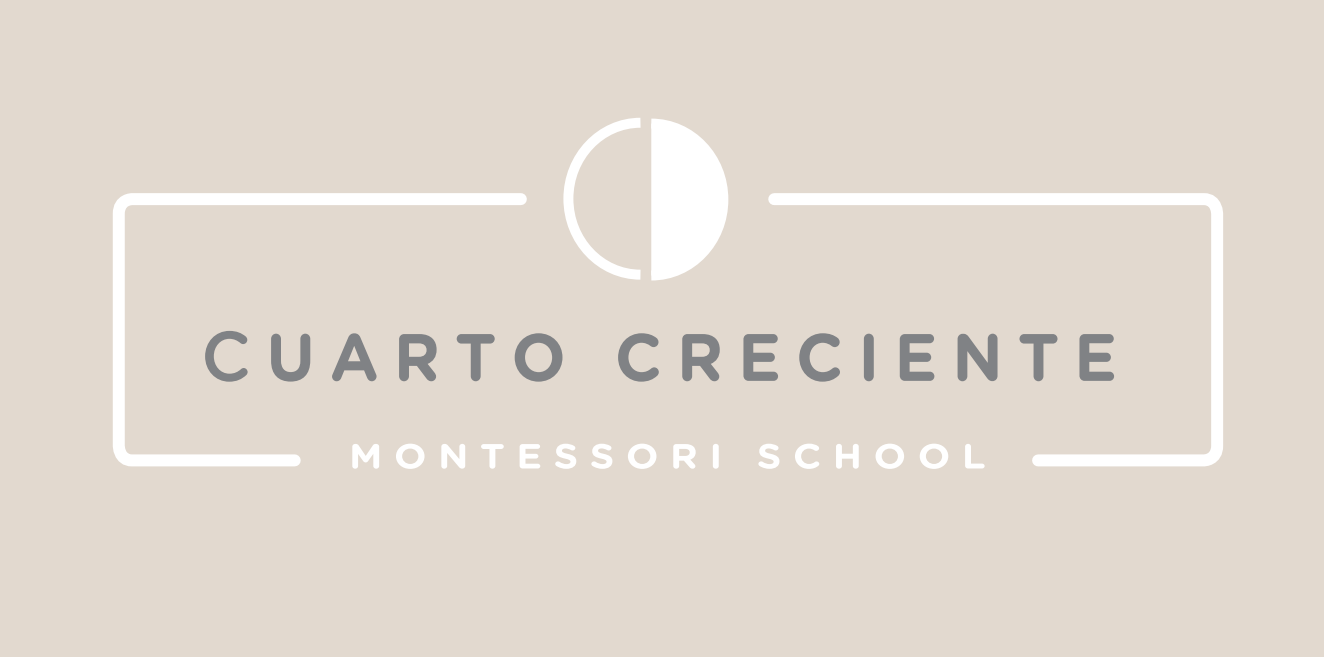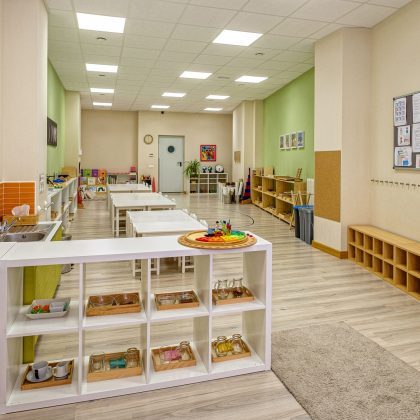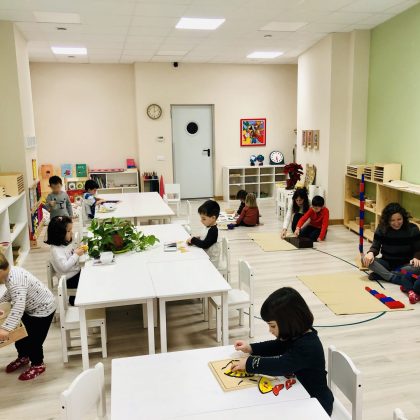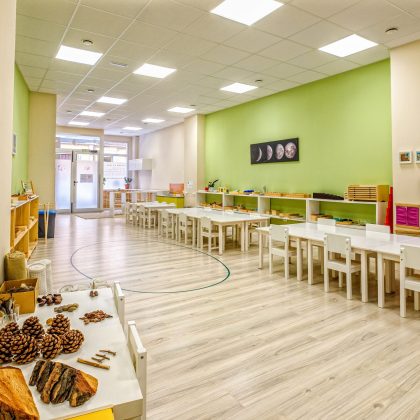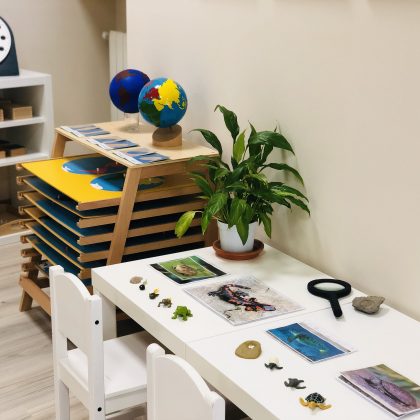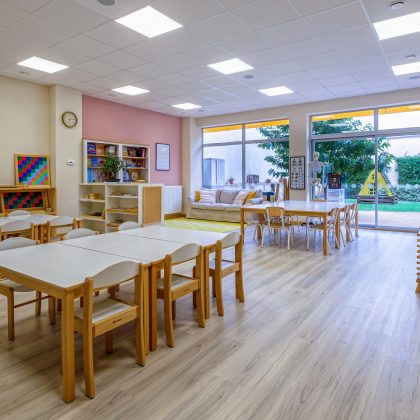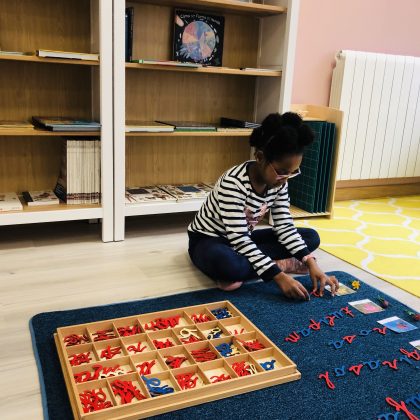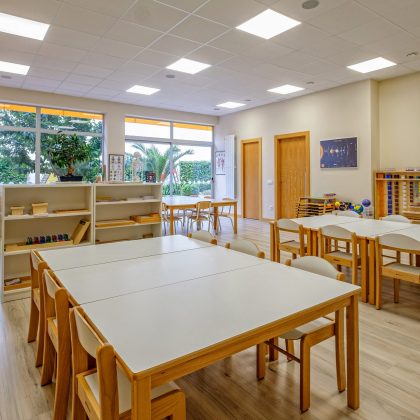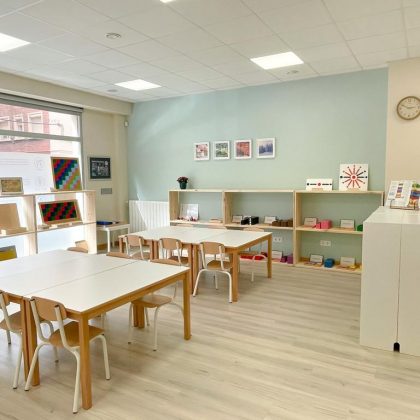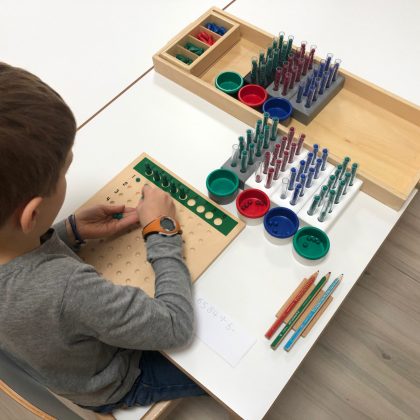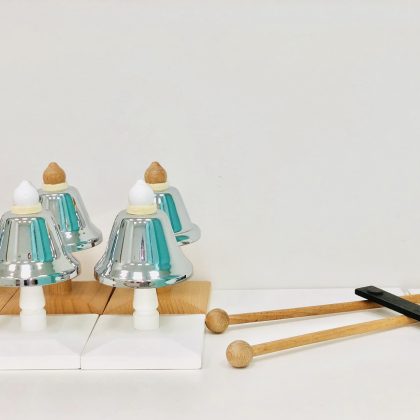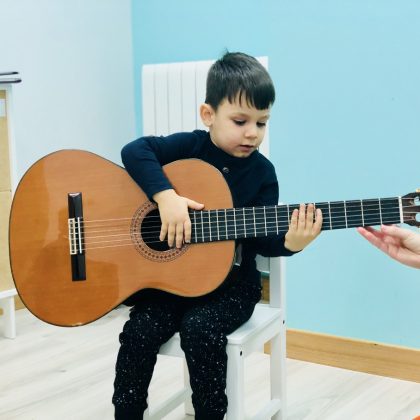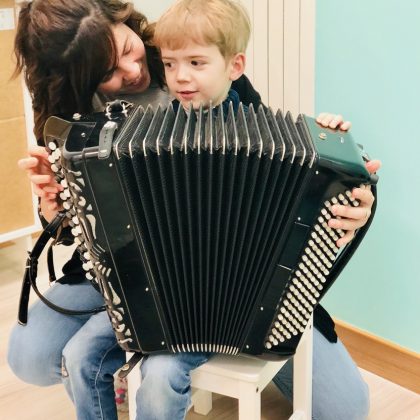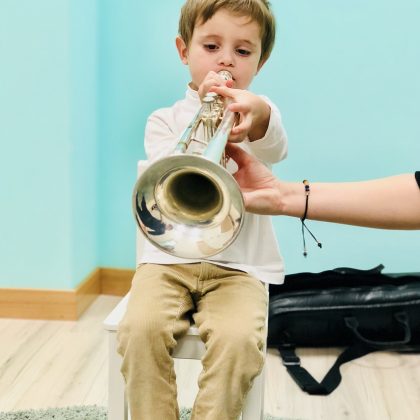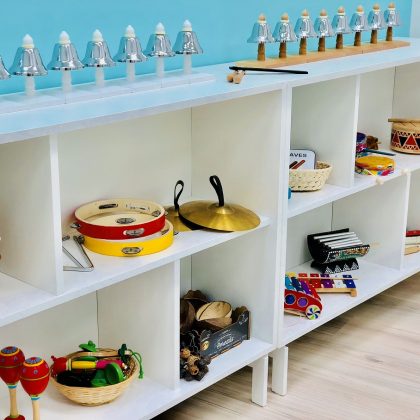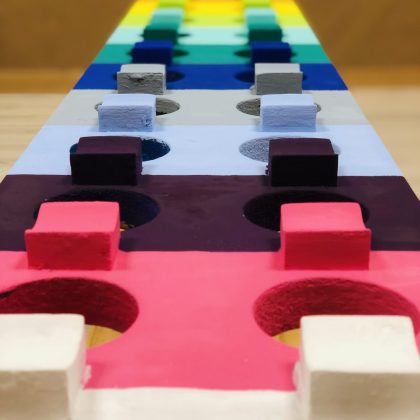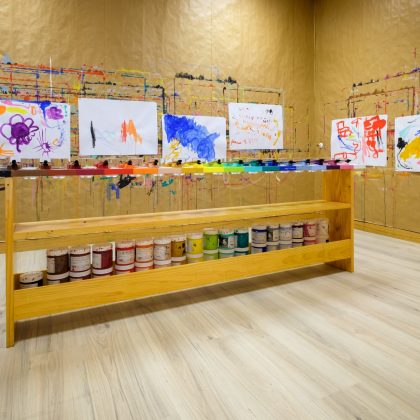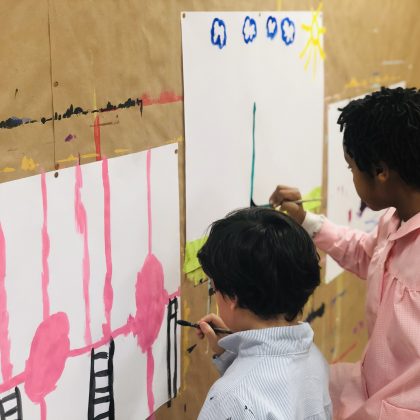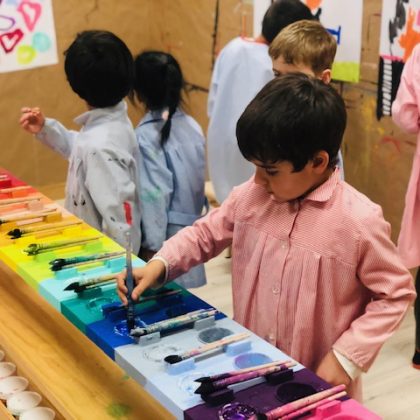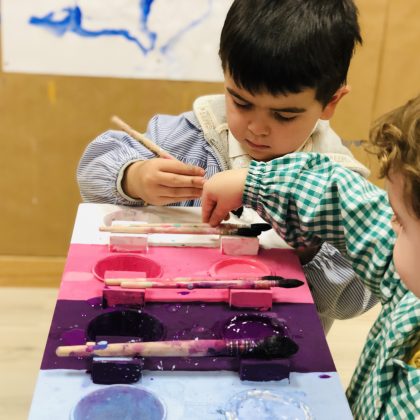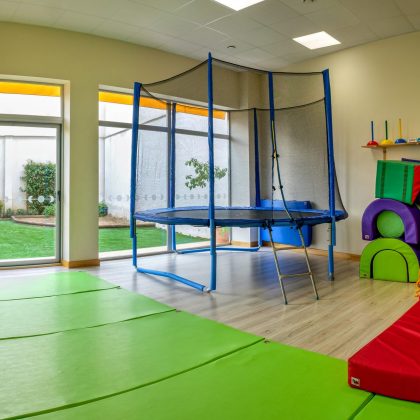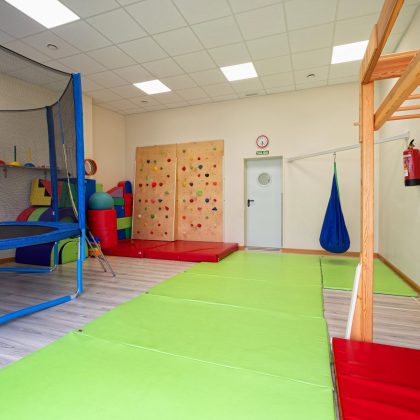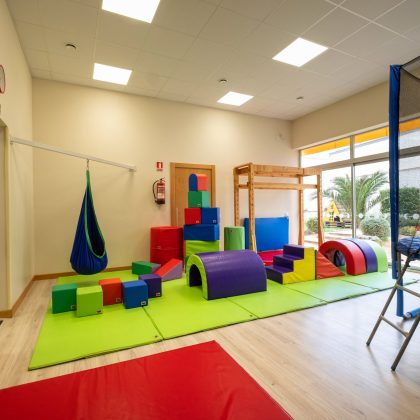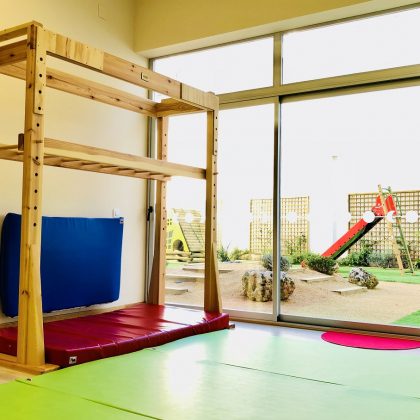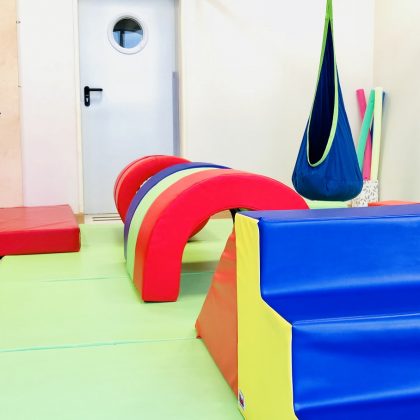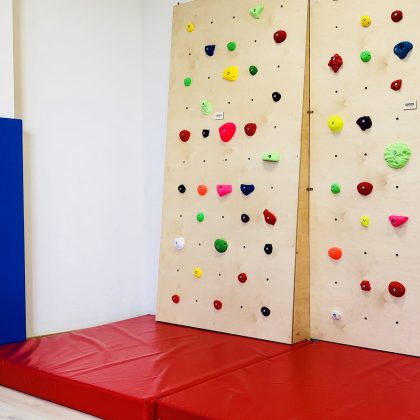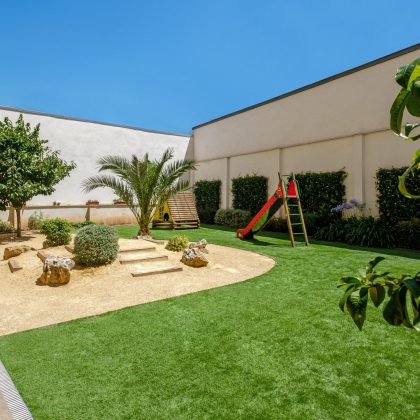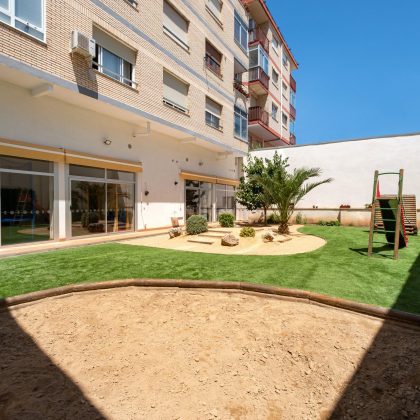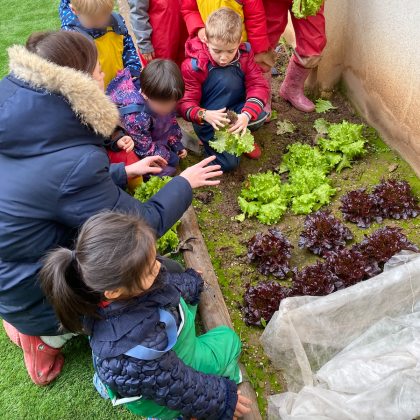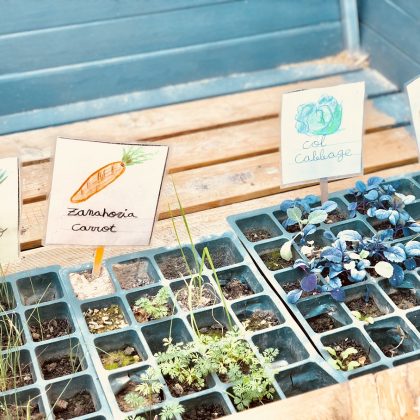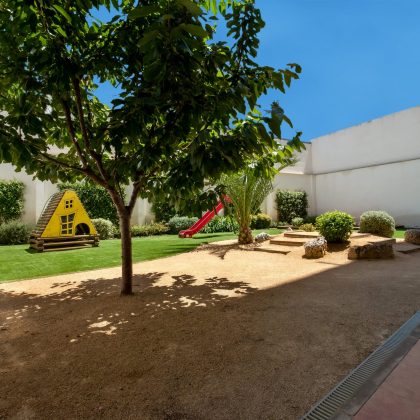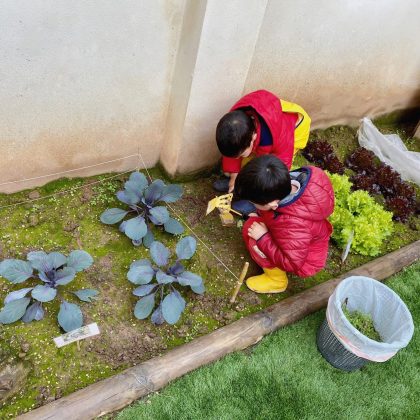
FACILITIES
In these classrooms, children will work with the manipulative material Dr. Maria Montessori developed. Thus, the classrooms are organized into work areas, as this pedagogical theory specifies for active learning.
The Montessori Method is based on five basic principles: The absorbent mind, the sensitive periods of learning, the manipulatives, the prepared environment and the role of the adult as a guide and observer. Manipulatives are designed with the aim of awakening children’s curiosity and guide them in their desire to learn.
The classrooms are equipped with child-sized tables and open areas so they can also work on the floor. Materials are also arranged on shelves within reach of children, grouped systematically in distinct subject areas and in order of their complexity.
MUSIC ROOM
In Cuarto Creciente Montessori School we consider essential to have a specific music classroom, as it is a fact that music helps children in their intellectual, auditory, sensory, speech and motor development.
Music offers children experiences that capacitate them to develop creative problem-solving approaches and increase concentration. This favors the acquisition of new learning, exercises memory, improves language skills or spatial intelligence and builds up self-confidence, because through music people can express themselves and show others what they like and are capable of doing.
Music also stimulates children’s body language, since they develop new resources by adapting the movement of their body to the rhythms of different compositions, contributing like this to the enhancement of their rhythm control and improving their coordination.
PAINTING ROOM
The importance of giving children the opportunity to express themselves through painting is undeniable. Here in Cuarto Creciente Montessori School, we adhere to the principles of Creative Education, presented by Arno Stern in “Le Closlieu”.
Arno Stern manages to reach an unusual balance between collective and personal. On one hand, the common palette of 18 colors, on the other, the individual canvas. The transition from one space to another is immediate and permanent and makes it possible to enjoy one’s own freedom among the freedom of others in a balanced way. People of different ages meet to work forming a heterogeneous group. In a group of these characteristics, diversity and difference are highlighted. Each person feels the possibility of being oneself without comparing themselves to anyone, being able to strengthen their most original and personal side.
The work is also carried out outside of judgment. When what is important is the process and not the results, when the concepts of right and wrong are eliminated, there is no longer fear of improvising and playing. Limits are broken and we evolve much more than we imagine.
PSYCHOMOTRICITY ROOM
In the very early stages of development, when a baby picks up two toys and hits them against one another, the corpus callosum is being activated, creating essential connections for communication between the cerebral hemispheres. The child needs to repeat a thousand times this little act in order to fix all the maths involved in it. Later when they crawl, their eyes practice the accommodation and convergence skills they will need to read. When a child swings or jumps, the vestibular system is literally flooded with information that translates into new connections between neurons called synapses that create the pathways through knowledge travels.
We are all born with a brain development program through movement perfectly refined since the origin of our species. However, the conditions in which children grow nowadays have changed a lot since the first Homo sapiens. We have gone from running and playing from dawn to dusk, to grow in urban environments, with activities divided by schedules and limited possibilities of free play and movement. Children’s brain keeps demanding movement, races, jumps, swinging. Movement is essential for children’s development and not just for their physical development, as it was believed until few years ago. It is also essential for their emotional and intellectual development.
Studies conducted in recent years conclude that there is a very close relationship between the development of movement patterns and cognitive learning. To the point that many of the learning difficulties arising in the Elementary stage have their origin in an incomplete development of movement, sensory integration or inhibition of primitive reflexes in the previous stage. In short, these studies confirm what children already tell us: They need to move to be happy and complete.
THE PLAYGROUND
The playground, a space where children can move freely outdoors, provides experiences that make body, feelings and thoughts work in an integrated manner, which allows learning at various levels simultaneously. In this way, sensorial life integrates with the emotional and cognitive.
It is not by chance that the psychomotricity room is the anteroom of the playground, so that it becomes an extension of it. Children continue playing and experimenting with their bodies in a space where they can run, walk up and down stairs, slide down a sledge… But this time outdoors, experiencing other sensations.
The playground offers a series of sensory experiences, such as different textures and consistencies in the spaces that make it up: Soil, sand, grass, tile… Surfaces to step on, touch, experience, water and that change their smell, color, texture…
Moreover, and how could it be otherwise, there is an organic garden where children will carry out planning, preparation, care and harvesting tasks, which provide an experiential learning of natural processes and cooperative work. Following the permaculture approach, the science that designs and creates sustainable human habitats, children will connect with nature and its cycles, observe weather and seasons and how they affect living beings, which is also linked to cultivation practices.
